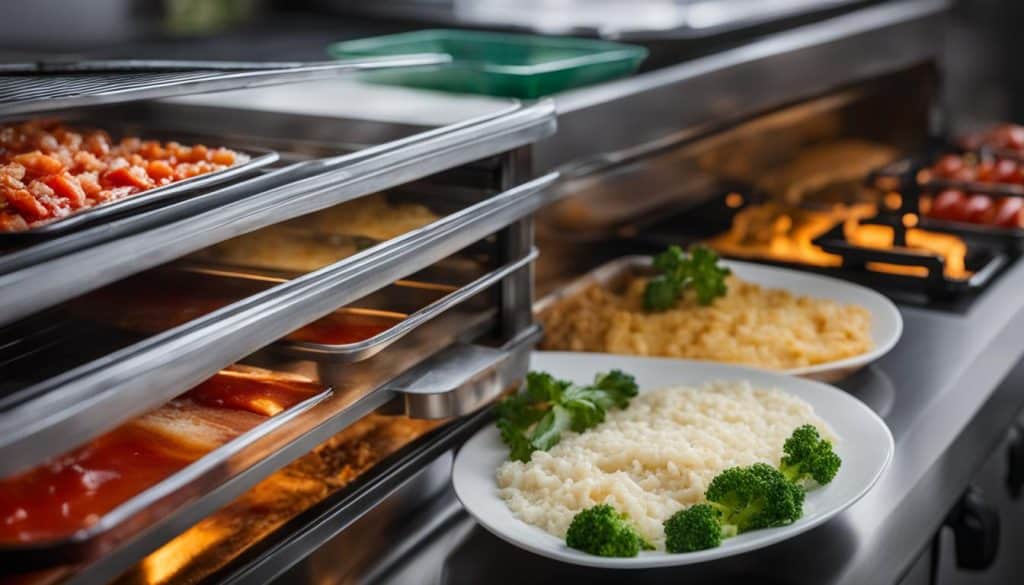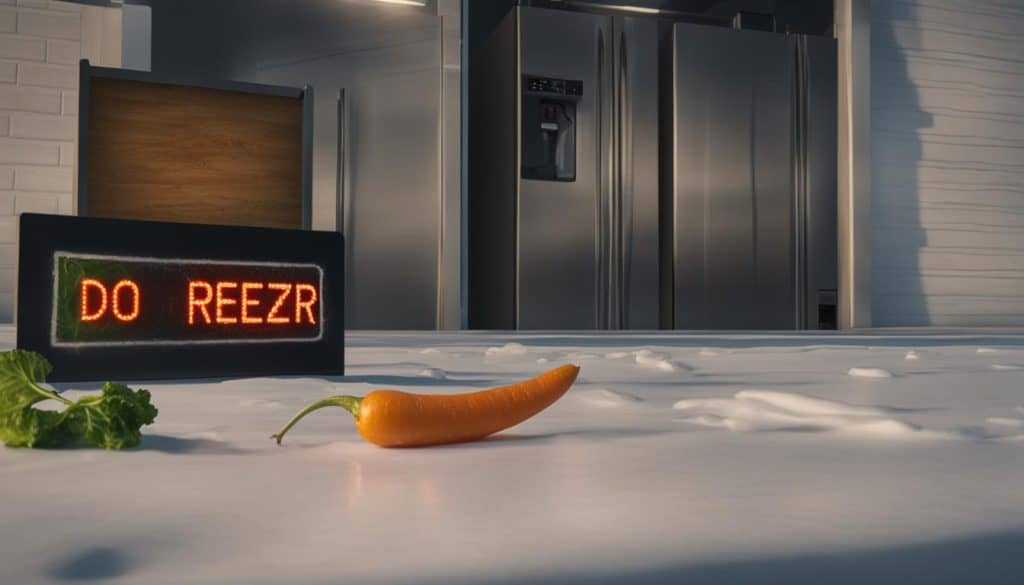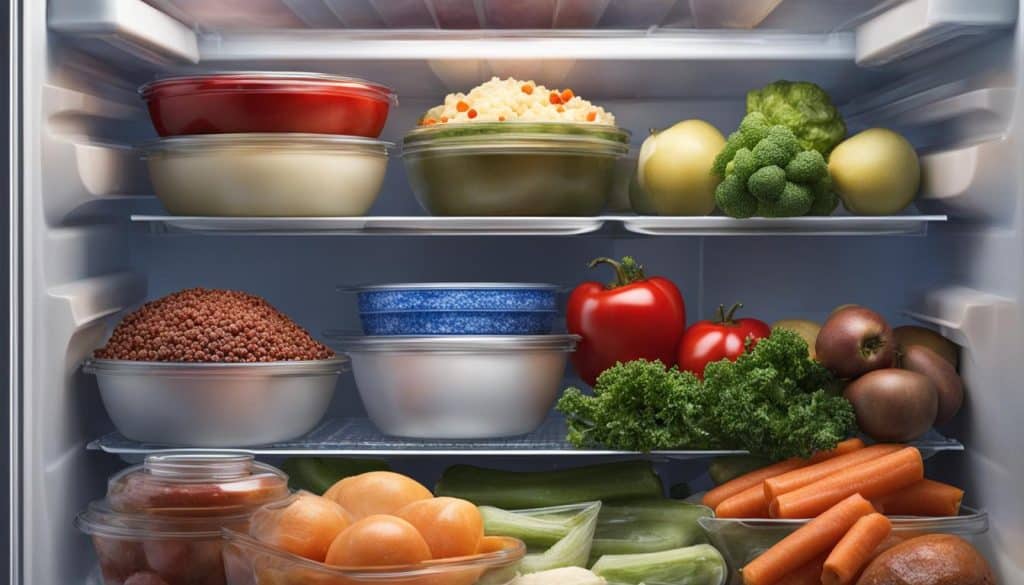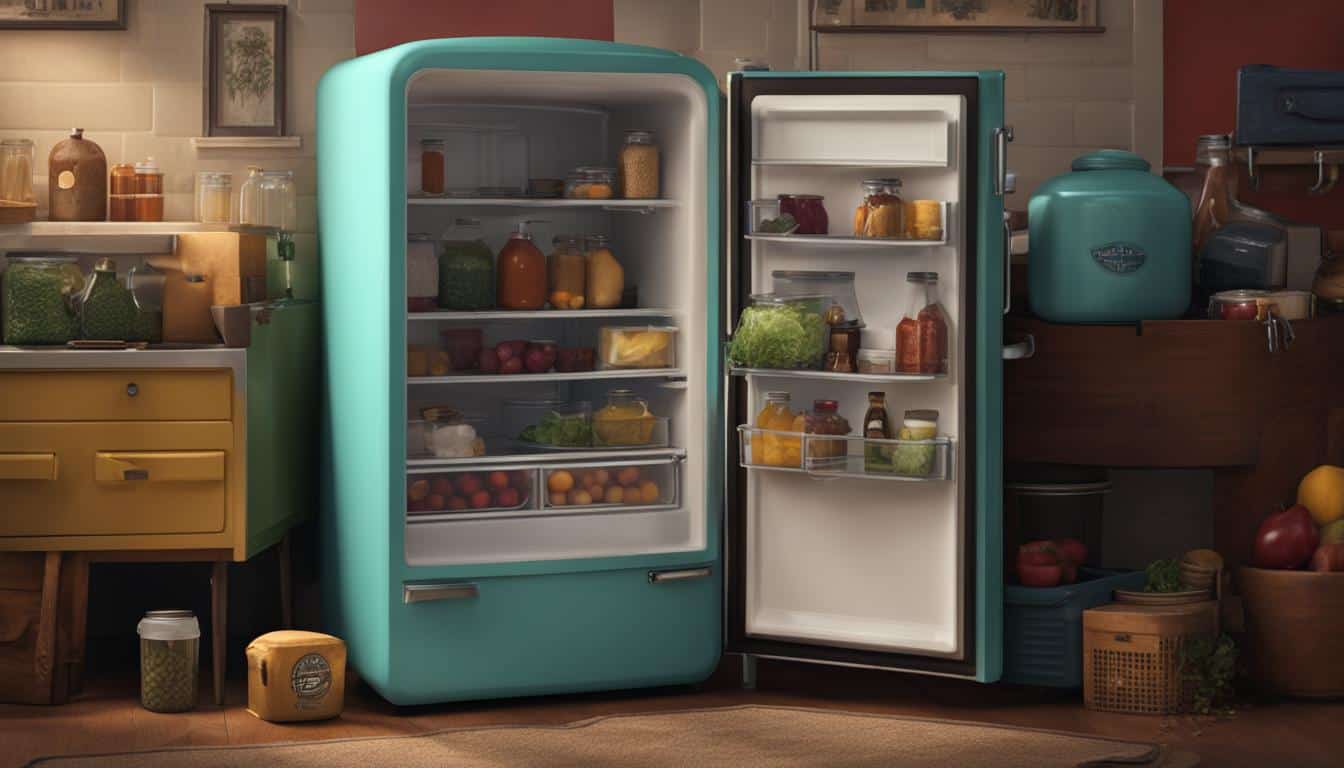Do you believe that manually defrosting your built-in freezer is necessary? Or that putting hot food in the freezer will ruin it? If so, you may be falling for common built-in freezer myths! We will debunk 10 of the most persistent myths so you can make the most of your freezer and keep your food fresh for longer.
Whether you’ve owned your freezer for years or are just getting started, knowing the truth behind these myths can help you save time, money, and effort. So let’s get started and put these built-in freezer myths to rest once and for all!
Myth #1: You should manually defrost your freezer regularly
Do you think that manual defrosting is necessary for maintaining your built-in freezer? Well, think again. Modern models are equipped with frost-free technology and built-in heating elements that allow them to defrost themselves automatically.
Not only is manual defrosting unnecessary, but it can also damage your freezer. Save yourself some time and energy and rely on your freezer’s frost-free feature instead.
Another advantage of frost-free technology is that it prevents the build-up of ice and frost, which can affect the performance of your freezer and decrease its energy efficiency over time. Trust your freezer to do its job and enjoy a hassle-free freezing experience.
Why you don’t need to manually defrost your frost-free freezer:
| Myth | Reality |
|---|---|
| Manual defrosting is necessary for maintaining a freezer | Modern models are frost-free and have built-in heating elements that allow them to defrost themselves automatically, making manual defrosting unnecessary. |
| Manual defrosting is more efficient than letting the frost-free feature work | Frost-free technology prevents the build-up of ice and frost, leading to better performance and energy efficiency over time. |
| Manual defrosting is the only way to prevent freezer burn | Proper storage techniques, such as using airtight containers and reducing air exposure, prevent freezer burn more effectively. |
Myth #2: Putting hot food in the freezer will ruin it
Have you ever been told that putting hot food directly in the freezer will ruin it? This is a common myth about built-in freezers.
While it’s not ideal to add hot food to a cold environment, modern freezers are equipped to handle it. In fact, your freezer will work to quickly bring the food’s temperature down.
Some freezers even have rapid-freeze settings to help minimize ice crystal formation. So, don’t worry if you’ve just made a piping hot meal and need to store it quickly. Just let it cool slightly before putting it away.

“While it’s not ideal to add hot food to a cold environment, modern freezers are equipped to handle it.”
Myth #3: Freezers kill all bacteria
It’s a common misconception that freezing kills all bacteria. While it is true that freezing can slow bacterial growth, it does not eliminate them entirely. This is why it’s important to still follow proper food safety and storage techniques, especially with built-in freezers.
Here are some key storage techniques to keep in mind:
- Use airtight containers to prevent bacteria from entering.
- Follow recommended storage times for each type of food. Freezing food past its recommended storage time can increase the chance of bacterial growth.
- Don’t leave food out for too long before storing it in the freezer, as this can promote bacterial growth.
By following these tips, you can help keep your food safe and minimize the risk of bacterial growth in your built-in freezer.
Why proper storage is essential
“Improper storage of food can lead to foodborne illness, which can cause serious and even fatal health problems. This is why it’s important to understand the proper food safety and storage techniques, especially when it comes to built-in freezers.”
Myth #4: You can refreeze thawed food
One of the most common built-in freezer myths is that thawed food can be refrozen. Unfortunately, this is not the case. Refreezing thawed food promotes bacterial growth, which increases the risk of foodborne illness.
When food is thawed, bacteria can grow rapidly and create toxins that can’t be destroyed by freezing or cooking.
It’s best to either cook the thawed food within 24 hours or discard it. If you know you won’t be able to cook it within 24 hours, consider separating the food into smaller portions before freezing for faster and more even thawing.

How to Safely Thaw Food
It’s important to note that proper thawing techniques are also crucial in preventing bacterial growth. Avoid thawing food at room temperature, as this can promote bacterial growth. Instead, thaw food in the refrigerator, microwave, or under cold running water.
| Thawing Method | Time Required | Best For |
|---|---|---|
| Refrigerator | 24-48 hours | Larger items like roasts, whole turkeys, or hams |
| Microwave | Varies by weight and power | Smaller items or portions |
| Cold Running Water | 1-2 hours | Smaller items or portions |
Note: Be sure to cook food immediately after thawing in the microwave or with cold running water.
Myth #5: Any food can be stored in the freezer door compartments
While the built-in freezer door compartments are incredibly convenient for storing frequently accessed items like ice cream or frozen veggies, they aren’t ideal for long-term storage. That’s because these areas are the most exposed to temperature fluctuations as you open and close the freezer door, and this can affect the quality and safety of your food.
If you’re looking to store items for more extended periods, like leftovers or raw meat, it’s best to keep them in the shelves or drawers. This will ensure a consistently cold temperature and reduce the risk of contaminants getting into your food.
So, the next time you’re tempted to fill up those door compartments with anything and everything, think twice, and consider if it’s better suited for short-term storage or the main shelves.

The Shelf Life of Common Frozen Foods
| Frozen Food | Shelf Life (in months) |
|---|---|
| Fruits and Vegetables | 8-12 |
| Meat (Ground) | 3-4 |
| Meat (Steak, Roast) | 6-12 |
| Poultry | 12 |
| Fish | 6-8 |
| Cooked Meals | 2-3 |
It’s also essential to keep in mind that even though frozen food technically lasts indefinitely if kept at a consistent temperature, the quality can deteriorate over time. To ensure the best quality, use food within the recommended time frames, and make sure to label and organize your freezer contents for easy access.
Myth #6: You should fill your freezer to capacity for optimal efficiency
It’s a common misconception that a full freezer runs more efficiently. In reality, proper air flow is essential for optimal performance, and overpacking your freezer can hinder this. Make sure to leave some space between items to allow for proper air flow and avoid overloading your appliance.
When your freezer is too full, it’s difficult for air to circulate and maintain proper temperatures. This can lead to increased energy consumption and potential food spoilage. Instead, aim to keep your freezer at 75% capacity. This will ensure that items freeze evenly and that air can circulate freely.

If you find yourself struggling to maintain proper air flow in your freezer, consider rearranging items or removing some of the less essential items. You may also want to check the freezer door seal to ensure that it is tightly sealed. A properly sealed door can help prevent warm air from entering the freezer and affecting temperatures inside.
Myth #7: Keeping an open box of baking soda in your freezer will eliminate odors
Do you keep an open box of baking soda in your freezer to eliminate odors? While it’s true that baking soda can absorb some odors, it’s not a magic solution to remove all odors. Over time, it becomes saturated and loses its effectiveness.
A better solution is to regularly clean your freezer and store food in airtight containers to prevent and eliminate freezer odors. Additionally, consider using odor-absorbing products like activated charcoal or specialized freezer deodorizers.

Note: Regular cleaning is essential to maintain the performance and efficiency of your built-in freezer.
Myth #8: You should never clean your freezer with a sponge
One of the most common Built-In Freezer Myths is the notion that using a sponge to clean your freezer is unsafe. However, this is not entirely true.
While you should avoid abrasive sponges or harsh chemicals that can cause damage, a clean, damp sponge is perfectly safe for cleaning your freezer. Avoid using harsh chemicals that can leave residues that affect food quality. Always rinse the sponge and dry the inside before placing food back in.
To clean your freezer with a sponge, start by unplugging the unit to prevent damage and save energy, then remove all the drawers and shelves. Try a gentle cleaning solution, such as baking soda or mild dish soap, to remove stubborn stains.
Scrub gently with a clean, damp sponge and avoid scraping any ice build-up as you clean. When you’ve finished cleaning, dry the inside thoroughly with a clean, dry towel and let the freezer air-dry with the door open for a few minutes.
Remember that cleanliness is crucial for food safety. Clean your freezer at least once a year or more frequently, as needed. Keep your fridge and freezer clean to prevent cross-contamination between your foods.
If you have any doubts about using a sponge or cleaning your freezer, consult the manufacturer’s warranty and maintenance guidelines.

Myth #9: The colder the freezer temperature, the better
It’s a common belief that setting your freezer to a colder temperature will make your food last longer. However, this is a myth. While keeping your freezer at the recommended temperature is important for food safety, setting it too cold won’t extend the shelf life of your food.
Built-In Freezer Myths can lead to energy waste, as you’ll need to use more electricity to maintain the lower temperature. So always stick to your manufacturer’s recommended temperature setting, which is usually at 0°F (-18°C).

To ensure your freezer is running at the proper temperature, use a thermometer to monitor its readings regularly. Any fluctuations beyond the recommended temperature range can have an impact on the quality and freshness of your food. Regularly defrosting your freezer, as discussed earlier, can also help maintain the proper temperature and prolong the life of your food.
Myth #10: Leaving the Freezer Light On Will Save Energy
It’s a common misconception that leaving the freezer light on will save energy. However, this is not the case. In fact, leaving the light on for extended periods can waste energy and lead to a higher electricity bill.
As a friendly reminder, be mindful of your freezer’s energy consumption. Only use the light when necessary and turn it off when you’re finished.
By following these simple steps, you can keep your built-in freezer running efficiently and save on energy costs.


